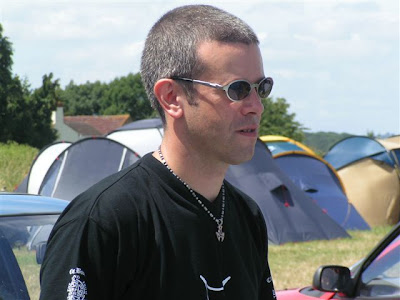My quest to add new birds to my "10-Mile List" once again took me to Willington Gravel Pits this morning. As I expected, all the goodies that had been reported over the past week were notable by their absence. The old birding adage of "You should have been here yesterday!" had struck once again!
Although the passage birds may have been missing there was still plenty to see. In the six hours I spent at Willington I recorded a total of 63 species, two more than my previous high count just six days ago. With many of the summer visitors still to arrive I’m confident that the species count will continue to rise.
The more notable birds seen included Shelduck, Goldeneye, Buzzard, Oystercatcher, both Ringed and Little Ringed Plover, Green Sandpiper, Kingfisher, Chiffchaff and Willow Tit. Two Greylag Geese flew low over one of the pits and gave me my first new bird of the day for my "10-Mile List", species No: 83. A female Wood Duck was also seen - no doubt an escape from somewhere!
After a very pleasant 3½ hours of birding - the sun was out and the sky was almost cloud free - I was starting to think that I wasn’t going to add any more new birds to my list. The Wood Duck will not count due to its extremely dubious origin! Then, at 10:25AM, it happened. A raptor was calling somewhere. For a couple of seconds I couldn’t place the call, or locate its source. I wasn’t exactly panicked but I was a little edgy shall we say! Where was the bird, and what was it?
Again, the call came and this time I spotted the bird, high overhead, and recognised the call. Just as I was about to alert my friend Mike to the bird he was on it too. We had an Osprey! All thoughts of the birds I had missed during the week were forgotten in an instant. One Osprey at Willington was worth more than a bunch of waders to me. Species 84 was on my list and it was a good one!
Although the passage birds may have been missing there was still plenty to see. In the six hours I spent at Willington I recorded a total of 63 species, two more than my previous high count just six days ago. With many of the summer visitors still to arrive I’m confident that the species count will continue to rise.
The more notable birds seen included Shelduck, Goldeneye, Buzzard, Oystercatcher, both Ringed and Little Ringed Plover, Green Sandpiper, Kingfisher, Chiffchaff and Willow Tit. Two Greylag Geese flew low over one of the pits and gave me my first new bird of the day for my "10-Mile List", species No: 83. A female Wood Duck was also seen - no doubt an escape from somewhere!
After a very pleasant 3½ hours of birding - the sun was out and the sky was almost cloud free - I was starting to think that I wasn’t going to add any more new birds to my list. The Wood Duck will not count due to its extremely dubious origin! Then, at 10:25AM, it happened. A raptor was calling somewhere. For a couple of seconds I couldn’t place the call, or locate its source. I wasn’t exactly panicked but I was a little edgy shall we say! Where was the bird, and what was it?
Again, the call came and this time I spotted the bird, high overhead, and recognised the call. Just as I was about to alert my friend Mike to the bird he was on it too. We had an Osprey! All thoughts of the birds I had missed during the week were forgotten in an instant. One Osprey at Willington was worth more than a bunch of waders to me. Species 84 was on my list and it was a good one!


I'm jealous LOL!
ReplyDeleteI may have to horn swaggle (that's cowgirl talk for MAKE her go)my mother into heading south west to the big lakes to find more birds.
Sarah